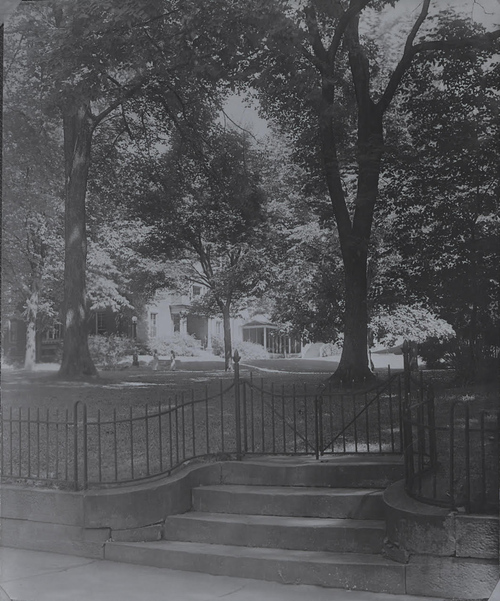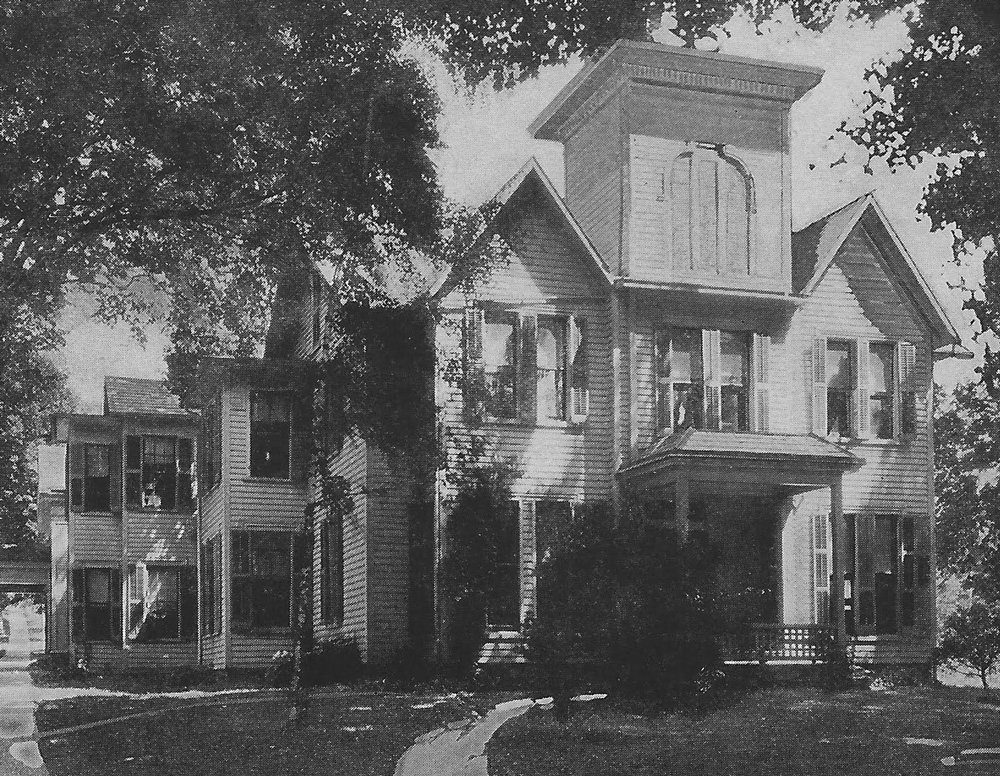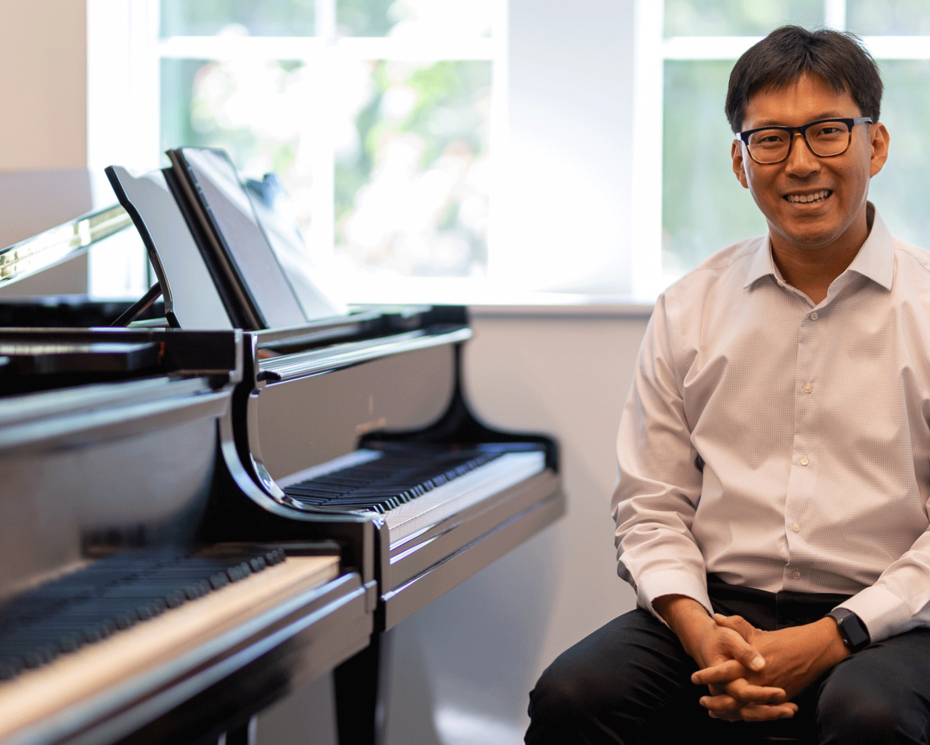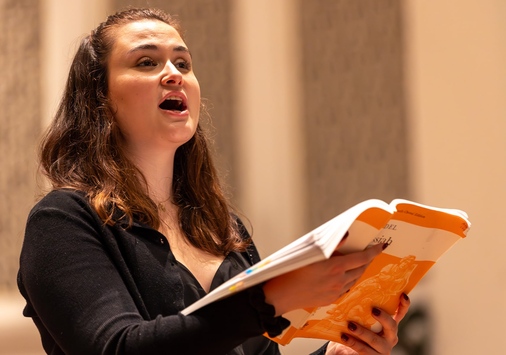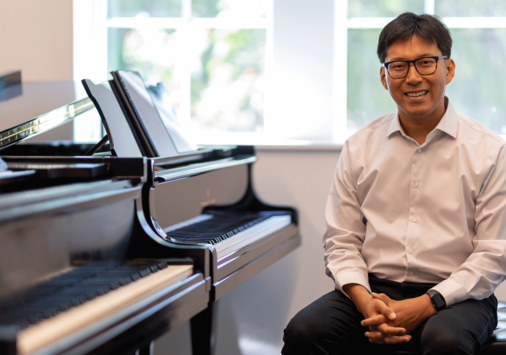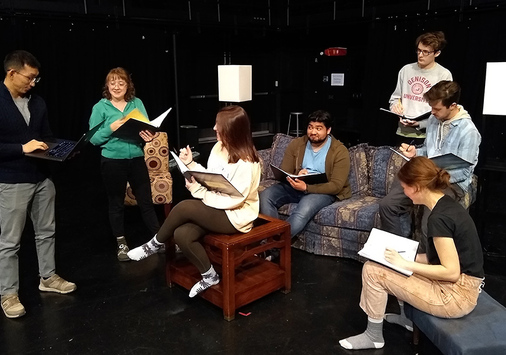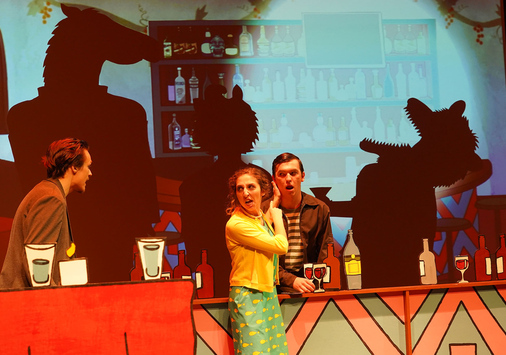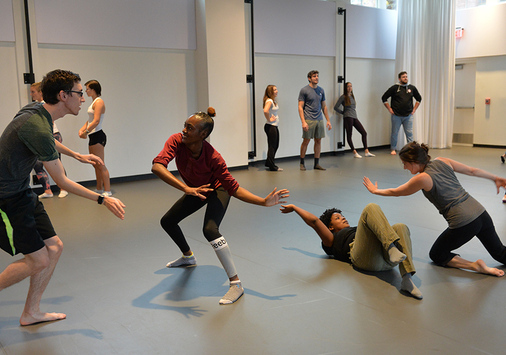Throughout the upcoming weeks, we will unveil a series of articles about the long history of Denison’s Arts Quad, tracing the evolution of the quad and exploring the various uses of these buildings over the years. The series begins by outlining the quad’s beginnings.
Granville was settled in 1805, when settlers were pushing west and establishing homes in the Ohio wilderness. The long block between Plum and Mulberry Street that now makes up Denison’s Fine Arts Quad was originally plotted like the rest of the village, in a grid for individual homes. The first residences on the western half of the block were gradually replaced by buildings comprising the Young Ladies’ Institute, later Shepardson College for Women, which merged with Denison in the early 1900s.
Denison acquired that land after 1924 from local tycoon John S. Jones who had bought up the entire block. Denison’s final acquisition was Monomoy Place on the southeast corner, along with the contiguous plots beside and behind the big house, from the Jones estate in 1935.
The remnants of Shepardson College can still be seen today. Burton Hall once served as housing and classrooms for female students, King Hall and Stone Hall were female dormitories, and Doane Gymnasium (now Doane Dance) was built for Shepardson in the early 1900s. On the stone wall along Broadway, you can see the stumps from Shepardson’s old distinctive iron fence, which was melted down during World War II for wartime needs.
Shepardson’s old iron fence, which was torn down during World War II, is shown here next to the stone steps from Broadway that are still there. King Hall is in the background.
Shepardson merged with Denison in the 1910s, and the buildings on the west half of the Arts Quad became part of the campus. In the 1880s, however, the eastern half of the Arts Quad was still private property.
Gilded Age coal baron John S. Jones was the owner of Monomoy Place, an Italianate mansion located on the northwest corner of Mulberry and Broadway, As part of his strong desire to expand his property, Jones aimed to acquire contiguous land to Monomoy. That led him to secretly buy up the two blocks next to Monomoy, the land that is now part of the Fine Arts Quad. In 1924, Denison President Emory Hunt, made a deal with Jones to acquire the land and make it part of the campus.
The final key to the lower campus becoming the center for Denison’s Arts was Thresher Hall, a building that once stood where the entrance to the Eisner Center is now. Thresher was the home of Almon and Mary Thresher, who lived in it in the late 19th-century. The Threshers wanted their home to be put to good use, and in 1897 they left it to Shepardson, which used it as a music conservatory.
The old Thresher Hall, with the Recital Hall addition. Thresher helped establish the lower campus as the home of the arts.
When Denison absorbed Shepardson, Thresher Hall became a place for music classrooms, offices, and practice rooms. But it wasn’t quite big enough to host performances, so a recital hall was added on the back of Thresher and became the location for many recitals, performances, and concerts.
In the coming weeks we will explore how the buildings developed over the years and their many uses over time.
